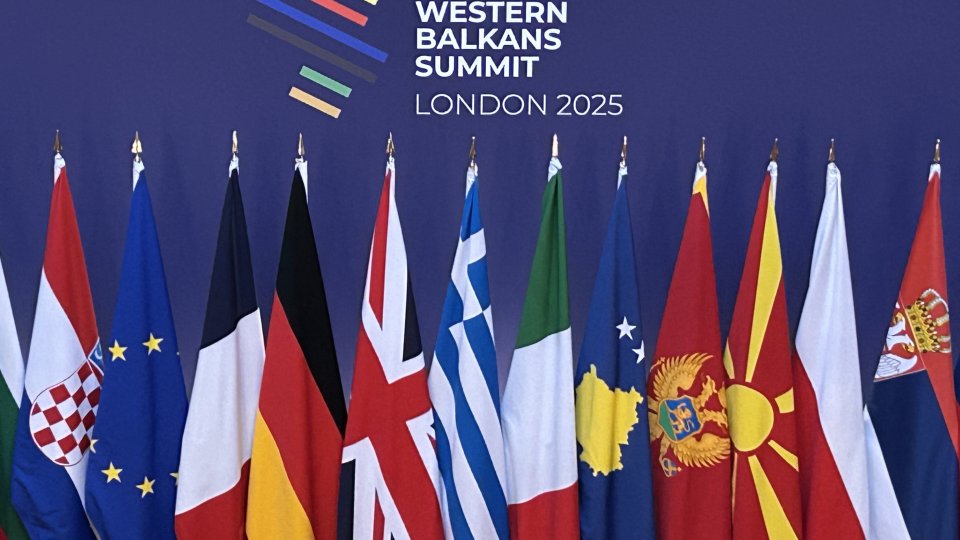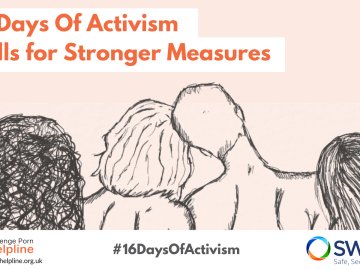The following speech was delivered by Boris Radanovic (Head of International Development at SWGfL) at the Western Balkans Summit 2025 which took place on 15th October 2025
It is an honour to stand before you today and I am grateful for the opportunity to speak  and mindful that this year marks the 80th anniversary of the end of the Second World War and 30 years since the Beijing Declaration and Platform for Action, which remains the most visionary blueprint for gender equality ever adopted. These are solemn reminders that peace and justice are never permanent achievements; they are ongoing responsibilities, of all of us, everywhere, together.
and mindful that this year marks the 80th anniversary of the end of the Second World War and 30 years since the Beijing Declaration and Platform for Action, which remains the most visionary blueprint for gender equality ever adopted. These are solemn reminders that peace and justice are never permanent achievements; they are ongoing responsibilities, of all of us, everywhere, together.
Today, our responsibility lies not only with our communities and citizens but also across our screens. Because if we lose justice online; we lose justice everywhere.
Context and Urgency
The topic before us, violence against women and girls, is a matter of national security, public health, and human dignity. It is of utmost urgency that we address the issues harming, hurting, and denying equality for half of our societies everywhere.
Digital violence against women and girls is violence. Like all forms of violence, it is rooted in inequality, control, discrimination, and in the collective silence that allows it to persist. So let us all raise our voice today for victims of non-consensual intimate image abuse.
Globally, we are witnessing a tidal rise in image-based abuse, in harassment, and in the online targeting of women, female politicians, journalists, activists, women who raise their voices face even higher levels of targeted abuse in order to silence them, and children.
Victims speak to us with pain:
“I couldn’t look at my phone anymore — every ping felt like a threat.”
“They threatened to send it to my colleagues, my parents.”
“I felt broken. Every day was a battle just to exist.” “He never touched me, but it touched every part of my life” “image-based abuse “took over my life” and “made me scared to exist online or outside.”
SWGfL’s research estimates that 40 million women globally suffer from non-consensual intimate image abuse each year. In the UK, reports to the Revenge Porn Helpline have risen by more than 20 percent year on year. Among victims, by various research, 51 percent contemplate suicide, 43 percent self-harm, and 10 percent attempt suicide. Women have 28 times more images shared than men, and even after removal requests, one in ten images remains online, often legally, due to jurisdictional gaps and weak platform compliance. Over 98% of the images that the Helpline have reported in its lifetime, are of women.
What does this tell us? That victim demand is outpacing our capacity. That gaps in law and enforcement leave survivors unprotected. That this is no longer a fringe issue, it is central to justice, dignity, and equality in the digital age.
The Western Balkans mirror these trends. Evaluations on the region underscore, that while important legislative steps have been taken on gender-based violence, digital forms of abuse remain inadequately defined, under-reported, and rarely prosecuted.
To bring this home regionally: using a conservative prevalence estimate of 1.42 % of adult women per year, we derive the following rough figures for the WB6: Across the Western Balkans, between 60,000 and 70,000 women may be affected by intimate image abuse each year, a number equal to the population of an entire city. And some estimates globally show that real number could be 76% larger in scale then CSAM.
No region that values justice and stability can afford to leave an entire city of women unprotected. Thus, in each country, tens of thousands of women may suffer NCII every year. For each, the path to safety is costly, fraught, and often obstructed. These are not abstract statistics, these are lives. When victims speak, their words converge, shame, fear, isolation, humiliation, betrayal. This is the emotional vocabulary of digital violence that leaves long lasting impacts.
As we deepen our understanding of this issue, it’s clear that technology-facilitated violence against women and girls is not only increasing, it is evolving and emerging digital threats now challenge every system we have. AI-generated imagery, synthetic sexual content or “deepfakes” are being weaponised to humiliate women. The images are fake, but the harm is real. Ephemeral messaging apps, disappearing content, and encrypted channels make regulation, reporting, and evidence gathering extremely challenging. Cross-border hosting and jurisdictional gaps allow abusive content to persist where legal reach is weak.
We are also seeing an alarming rise in financially motivated sexual extortion or sextortion, where perpetrators use both stolen and fabricated images to coerce victims into silence, further abuse or blackmail.
These developments are outpacing our current laws, our policing capacity, and our mutual legal assistance frameworks. Even in the UK, with advanced digital safety legislation such as the Online Safety Act making intimate image abuse a priority offence, the problem remains significant and requires constant vigilance.
As we strengthen our own frameworks, the international community is also taking decisive steps. Later this month, on the 25th and 26th of October in Hanoi, the United Nations Office on Drugs and Crime will open for signature the United Nations Convention against Cybercrime, adopted by the General Assembly last December.
This is the first comprehensive global treaty on cybercrime, and significantly, Article 16 recognises the non-consensual dissemination of intimate images as a criminal offence.
It calls on every State Party to adopt laws that make the intentional sharing, publishing, or transmission of intimate images without consent a punishable act. This is a landmark achievement, the first time that intimate image abuse has been codified in a global instrument of international law. For all of us here today, this represents not only a legal milestone but a shared commitment: that what happens online is no longer beyond the reach of justice.
And beyond the moral imperative, there is a clear economic argument.
Modelling from the World Bank suggests that when women are excluded from full economic participation, in part due to harassment, violence, and discrimination, countries can lose around 3 to 4 percent of GDP in aggregate output each year. These are not abstract losses; they are the cost of inequality.
When women are silenced societies stagnate. When women are safe, economies grow.
Responsibility of Technology Companies
Yet, as we sit here discussing cross-border cooperation and crime, we must ask an uncomfortable question: Is our global response to technology companies on this issue on par with the priority it deserves? Because these are the new borders, algorithmic, digital, ever changing, invisible, and too often unregulated. We must do more to compel technology companies to treat violence against women and girls as a global emergency, not a public-relations risk.
So I ask you, Ministers, how can we elevate this issue to the same diplomatic, economic, and legal priority that we already assign to trafficking, radicalisation, or cybercrime?
And what can we, collectively, do to ensure that the platforms profiting from our societies also protect them? And what we can do to leverage and help smaller communities and nation states that do not have the same regulator or economical leverage to better influence changes in global companies?
UK Leadership and SWGfL’s Model Response
The UK has sought to lead not just in rhetoric but in practice. Through the work of SWGfL and the Revenge Porn Helpline, the UK has built a National Model Response to Intimate image abuse , combining helpline support, data insight, technology partnerships, and international coordination.
At the centre of this response stands StopNCII.org, a global tool that prevents the non-consensual sharing of intimate images before they ever go online. Developed by SWGfL in partnership with Meta and backed by a growing coalition of NGOs (117+ across the world), StopNCII.org allows individuals, particularly women, to take control of their images through privacy-preserving technology.
Today, StopNCII.org operates in all countries, and is expanding across Europe, the Americas, and Asia to support adults suffering from IIA. Its approach, cross-border, multi-stakeholder, victim-centred, is a living model of what cooperation can achieve when governments, NGOs, and industry work together. This is not theory. It is a functioning infrastructure that prevents harm, every day for all adults suffering from Intimate Image Abuse, all across the world.
So How Do we Act Together?
The answer lies in regional cooperation and shared standards and that begins with dialogue like this.
We cannot tackle these threats in silos. The solutions must be collective:
- We need to ensure that NCII and AI-generated abuse, and image-based threats are codified explicitly and consistently across jurisdictions.
- Establish regional rapid-response frameworks — trusted, high-trust channels among police, prosecutors, helplines, NGOs for fast action.
- Enable cross-border data sharing and evidence exchange — with privacy safeguards, but recognising urgency and victim safety.
- Hold technology companies to global standards — press for universal adoption of hashing, content prevention, transparent reporting, and accountability.
- Strengthen victim pathways across borders, so a woman in one country targeted by someone in another can still access help, justice, and removal support.
The Western Balkans and the UK share not only the problem, but the opportunity to build the solution. A solution that is scalable, informed, and replicable all around the world.
Through collaboration, technology exchange, and shared accountability, we can build a safer digital environment, one where women and girls are not the collateral damage of innovation, but the beneficiaries of it.
Regional Cooperation and Call to the WB6
I believe the Western Balkans can lead the next chapter.
UNFPA’s 2024 legislative roadmap provides a foundation, but we now need to connect that legislative ambition with practical, victim-centred implementation. We need to better understand the situation on the ground and find practical solutions to be implemented with support.
That is why, over the next six months, we will prepare a report for the UK Foreign, Commonwealth and Development Office on the state of Intimate Image Abuse in the Western Balkans. As part of our international work and focus on the region, we are translating the StopNCII.org website into Western Balkan languages so that victims of intimate image abuse can immediately access help.
I invite your governments to help us. We cannot do this alone.
Your insights, your letters of support, and your guidance on what is happening on the ground will be invaluable.
Together, we can ensure this report is not just another publication, but a blueprint for real change, rooted in the lived realities of women and girls across the region.
No conversation about gender-based violence can end without addressing men. We do have a problem with unregulated digital companies, patchwork of regulation policy and laws, jurisdiction issues, prosecution issues and content classification but most importantly we do have a problem that also lies in men’s behaviour.
We need to bring men along for this. Men must be part of the solution, as policymakers, as fathers, as educators, as allies.
Every law we pass, every helpline we open, every partnership we create must carry that principle forward: that equality is not a women’s issue — it is a societal imperative.
Closing Remarks
Colleagues, you have been gathered here to discuss prosperity, mobility, and stability across regions. But none of those words mean anything if women and girls are not safe, online or offline.
So I invite you to match the courage of millions of victims with the urgency of our action.
Let us demand more from industry, collaborate more across borders and learn from each other. So we may never allow violence, in any form, to hide behind technology. Technology must assist us not harm half of our population.
Because justice is indivisible. And if we lose justice online we lose justice everywhere.
Thank you.






